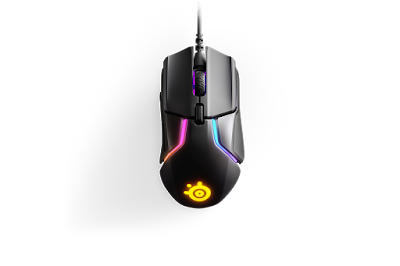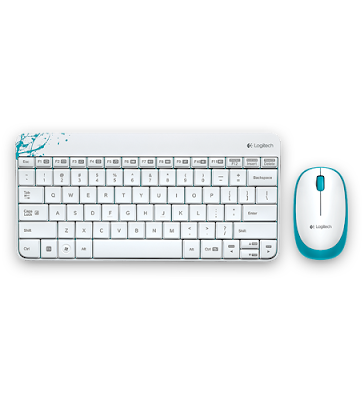 |
| Steelseries Rival 600 official shot. |
Anda berbicara Bahasa Indonesia? Baca artikel terjemahannya di
sini!
I'm a gaming accessories hater-turned-fan, especially after trying Steelseries' Rival 500
(review here). I then bought a MSi laptop (which happens to have Steelseries keyboard), and the next thing I knew, I was already entrenched in Steelseries' ecosystem. Funny how your mind can be changed just by trying out the real-life product.
I'm on the verge of buying their mousepad, but that's a story for another day. What I'm going to talk about today is the latest mouse on their lineup, the Rival 600. Its beautiful design and symmetric streams of colors enticed me into buying it. I've used it for both gaming and working for approximately a week now, and I'm ready to share my experience. Okay, so shall we start?
Packaging and Design
 |
| Steelseries Rival 600 box |
I've been anticipating the Rival 600 ever since its launch, so I was very happy when the product came to my doorstep. The box is just like other Steelseries products, with the mouse featured along with geometrical pattern background.
 |
| What's inside |
Open it, and you'll find the mouse itself, along with a cable (it's detachable!) and a small case fitted with 8 weight blocks, each weighing 4 grams.
 |
| What's inside. Detailed. |
 |
| The weight blocks |
By far, this is the neatest-looking mouse I've seen at an affordable price. No, don't get me started on Mad Catz' R.A.T series mouse, they look way too frightening to use. I'll probably vote for Razer's Ouroboros, but its price is almost, if not already, twice the Rival 600, though it also supports wireless.
 |
| The RAT Pro X+ from Madcatz. Frightening. |
It's made of matte black plastic. Though smooth and quite pleasant to use, I'm afraid that it might pick up dust and sweat easily, something that I'm prone of.
 |
| Clean your mouse regularly, boys! |
Anyway, you can open up the sides to insert the weight blocks. It's held together by a couple of strong magnets. Quite convenient if you tend to change weight often. Each side can hold up to 4 blocks, so you may add up to 16 grams in total. Since I previously used the Rival 500 (which was very heavy, by the way...), I used all the blocks to make myself comfortable. Oh, and there are also three additional buttons on the left side.
 |
| Left side. |
 |
| Right side. |
As I said earlier, the cable was detachable. Even though it uses microUSB, the tip is oddly-shaped which fits perfectly in the mouse. This is cumbersome, because if the cable breaks, you can't just pick up a spare microUSB cable and replace it.
 |
| The cable is detachable. |
 |
| The tip of the cable will make it harder for you to replace it. |
Flip the mouse over, and the design here is no less neat. You have three rubber pads to make sure the mouse glides smoothly on the surface. There's also an extra sensor, which is said to minimize distortion when moving the mouse.
 |
| The flipside. There are rubber pads and an extra sensor. |
Overall, I'm very impressed with the Rival 600's design. Let's see if its performance gives the same impression.
Experience
Using the Steelseries Rival 600 has always been a pleasure, though I needed to make some adjustments. Its narrower, longer, and lighter than my Rival 500. Strangely, I also felt that the buttons are heavier compared to the 500. It took me a few days to get used to it. I also miss the tactile feedback (read: vibration) on the 500. I think Steelseries could've fitted that in the 600, given its higher model number.
As for the advertised TrueMove3+ sensor, when I curiously lifted the mouse then put it back down, the cursor indeed returned to its original position. Honestly, the feature wasn't that useful for me. I don't know, maybe because I don't game competitively that much?
 |
| The Steelseries Engine serves as a hub to all your Steelseries peripherals. |
Anyway, speaking about Steelseries, I'm sure you know about their Steelseries Engine software. It's a centralized hub to configure everything related to your Steelseries peripherals. You can control the cursor speed (CPI), button mappings, illumination, and more. So far, I've only been using the first three features, though.
 |
| You can customize a lot of things in the Engine. |
I'll say it again, the illumination is neat. To make that stream of colors in the middle, there are a total of six RGB zones, each you can configure to have its own colors. When you turn both on, it feels like having your own lava lamp, minus the blob.
 |
| Depending on your creativity, your mouse can give away beautiful streams of colors. |
Conclusion
 |
| The Steelseries Rival 600 is a neat-looking mouse that won't disappoint... given the right audience. |
To be honest, I feel that the key point in the Rival 600 is its design, since I don't feel the significance of their so-called TrueMove3+ sensor. Well, take it from non-pro casual gamer which mostly uses his mouse for working purposes.
Anyway, despite being a great mouse, apart from the design, I don't feel that the Rival 600 warrants an upgrade, from either Rival 500 or 700. Its price point is kind of a little bit close to each other, and you'll lose that satisfying tactile feedback available both Rival 500 and 700.
Pros
- Beautiful design
- RGB. Lots of it.
Cons
- No tactile feedback
- The TrueMove3+ sensor isn't really that useful for everyday life
- Pricing is a little bit too close to Rival 500 and 700
- Matte surface is prone to dust and sweat
Okay, I guess that's all for now. I hope this article is useful for you, especially those of you who is in the market for a new gaming mouse. As usual, if you have any questions, just sound them in the comments below. Finally, thanks for reading and I'll see you in the next article. Have a nice weekend! :D

















Comments
Post a Comment